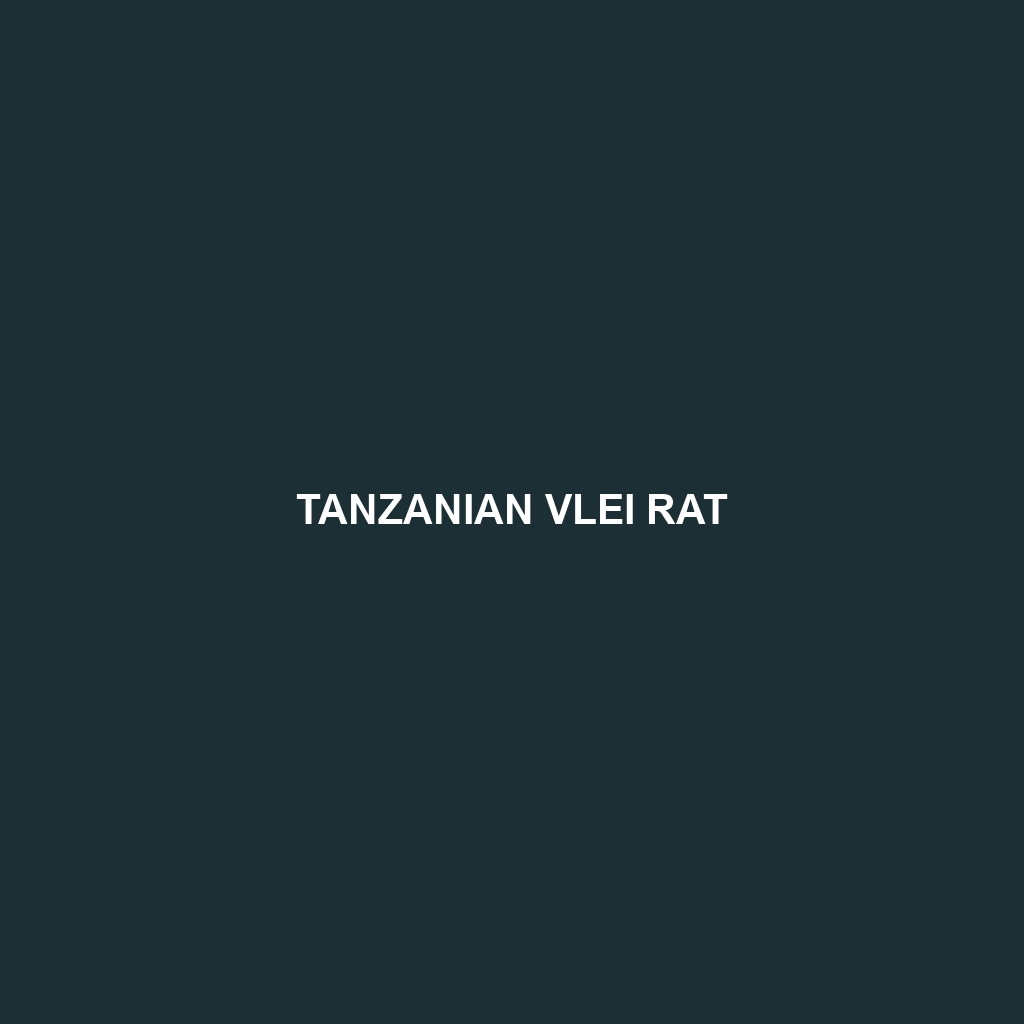Tanzanian Vlei Rat: A Comprehensive Overview
Common Name: Tanzanian Vlei Rat
Scientific Name: Otomys planiceps
Habitat
The Tanzanian Vlei Rat primarily inhabits the wetlands and grasslands of Tanzania and parts of Mozambique. These regions are characterized by marshy areas, tall grasses, and a variety of freshwater bodies. The species thrives in areas that are rich in vegetation and close to water sources, which provide both shelter and food.
Physical Characteristics
The Tanzanian Vlei Rat averages about 250 to 400 grams in weight and measures approximately 20 to 30 centimeters in length, not including the tail. Its fur is typically a mix of brown and gray, with a creamy underbelly. Distinctive features include large, rounded ears, a moderately long tail that is often darker than the body, and sharp incisors, adapted for gnawing on vegetation.
Behavior
Tanzanian Vlei Rats are known for their semi-aquatic lifestyle, often found foraging near water. They are primarily nocturnal, exhibiting increased activity during the night. These rodents are social creatures and are often observed in small family groups, engaging in grooming behavior and vocalizations to communicate with one another. Their burrowing habits also allow them to create extensive tunnel systems.
Diet
The diet of the Tanzanian Vlei Rat mainly consists of grasses, sedges, and aquatic plants. They are herbivores, and their feeding habits are adapted to their wetland habitats. During the rainy season, they may also consume seeds and fruits that become available. This species plays a crucial role in its ecosystem, as it aids in plant seed dispersion.
Reproduction
Tanzanian Vlei Rats breed throughout the year but may have an increased reproductive rate during the rainy season when food is abundant. Females typically give birth to 3 to 6 offspring after a gestation period of about 25 days. Young Vlei Rats are weaned after about 3 weeks but remain with their mothers for several months, participating in group foraging.
Conservation Status
The Tanzanian Vlei Rat is currently classified as “Vulnerable” on the IUCN Red List due to habitat loss and degradation from agricultural expansion and urban development. Conservation efforts are essential to protect their wetland habitats and ensure the species’ survival.
Interesting Facts
– The Tanzanian Vlei Rat is often mistaken for other rodent species due to its similar size and coloration, but its unique habitat preferences set it apart.
– These rodents are known to store food in their burrows, helping them survive during dry periods.
Role in Ecosystem
As herbivores, Tanzanian Vlei Rats play a significant role in their ecosystem by influencing plant community dynamics through their feeding habits. Additionally, they serve as prey for various predators, including birds of prey and small carnivorous mammals, thus contributing to the food web in their natural habitat.
